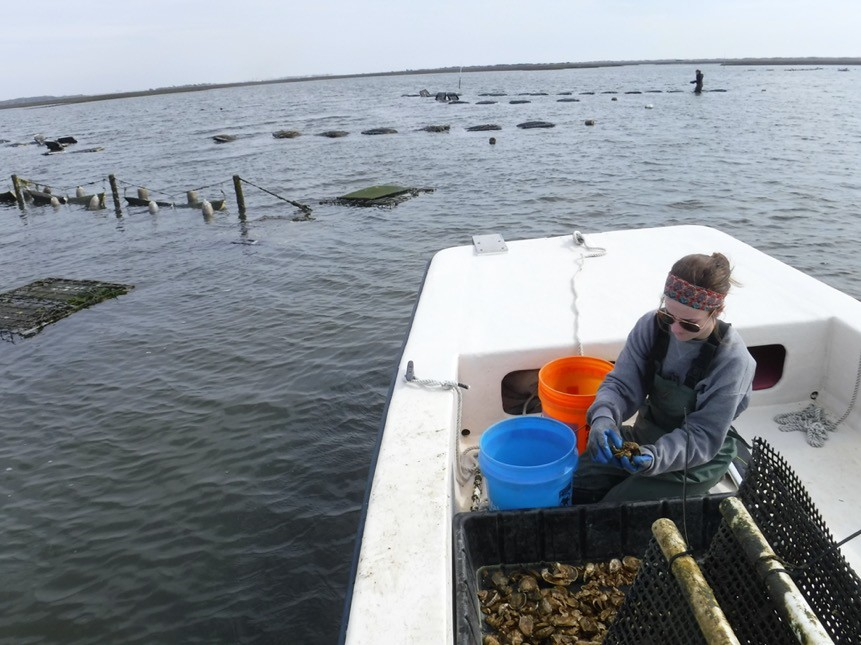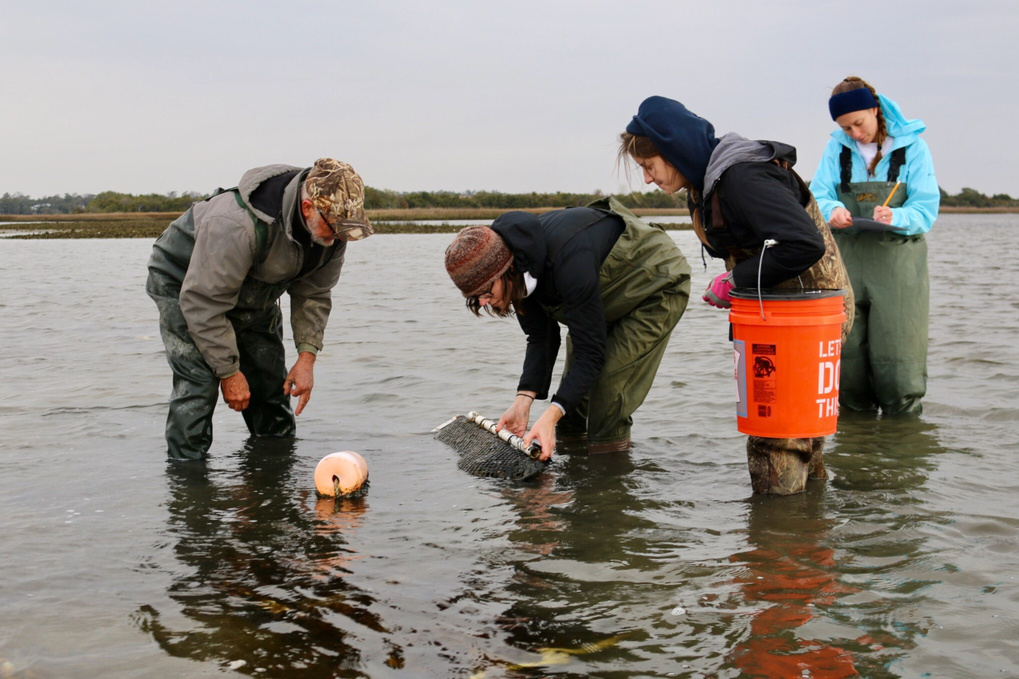We evaluated the potential ecosystem services and impacts of newly established oyster farms in intertidal and subtidal coastal areas of North Carolina to help inform oyster farm siting and permitting. Our project findings will help state resource managers and oyster growers assess locations and scales of aquaculture operations to maximize aquaculture success and minimize detrimental ecological impacts.

Why We Care
Ecosystem services are goods and services provided by ecological systems that benefit people. The historically small but stable shellfish aquaculture industry in North Carolina will potentially rapidly increase due to recent regulatory changes. Potential increased demand for shellfish aquaculture is putting pressure on resource managers making decisions on where aquaculture farms are sited, including whether to allow them within the North Carolina National Estuarine Research Reserve (NCNERR). New farms provide an opportunity to assess conditions before and after farm installation, making North Carolina estuaries an ideal place to explore the ecosystem services of shellfish farming.
What We Did
To assess the ecosystem services of oyster aquaculture, we sampled in and adjacent to aquaculture operations, concentrating on changes to wild shellfish resources and the physical and chemical environment, with an aim to link small-scale perturbations (i.e., organic enrichment, oyster gene expression) with larger scale ecosystem-level alterations.
We are using stakeholder guidance to develop a decision-support tool to incorporate environmental impact and ecosystem service criteria into aquaculture siting decisions, and a farm-scale production model to estimate impacts of new farms on water quality and value of nitrogen removal.
We collected new field, lab, and modeling data on shellfish cultivation impacts on: wild oyster resource, habitat, and water quality in a NCNERR site (Masonboro Island) and a site outside of the Reserve (New River).
We are developing a better understanding of environmental influences of shellfish cultivation in the NCNERR and other regions in southern North Carolina.
Project Partners include the University of North Carolina Wilmington (UNCW), the North Carolina National Estuarine Research Reserve, Longline Environment Ltd, and Oregon State University. The project team is grateful to oyster farmers Tim Holbrook, Al Smeilus, and Matt Schwab for their engagement in the project.
What We Found
Initial findings show watershed nitrogen removal by oysters was 50–230 kg N (15–70 population equivalents) per leased acre per year. A conservative valuation of the cost avoided to remove nitrogen is $1,600–$7,300 per leased acre per year. Additionally, findings suggest that the most preferable sites for oyster aquaculture could be sites where water quality would benefit the most.
Data sets for this project have been archived with the NERRS Centralized Data Management Office and will be made publicly available in fall 2022 through a request form accessible on this page. Prior to fall 2022, individuals may reach out to the project lead to discuss potential collaborations and applications of the data. Questions about these data sets can be directed to project lead Elizabeth S. Darrow (Bald Head Island Conservancy, Email: darrow@bhic.org).

